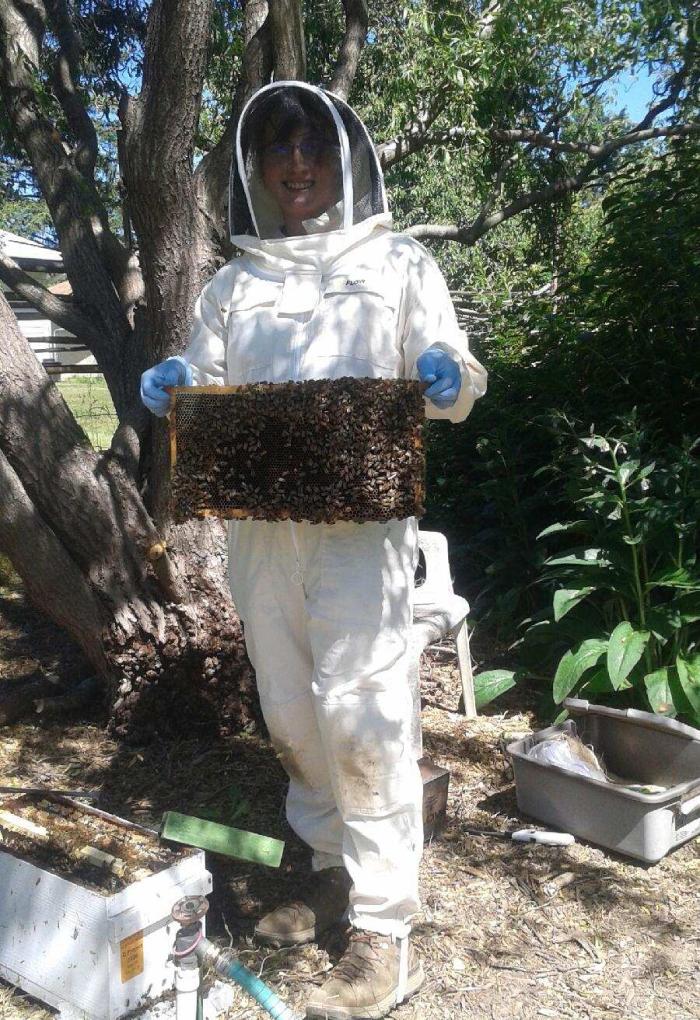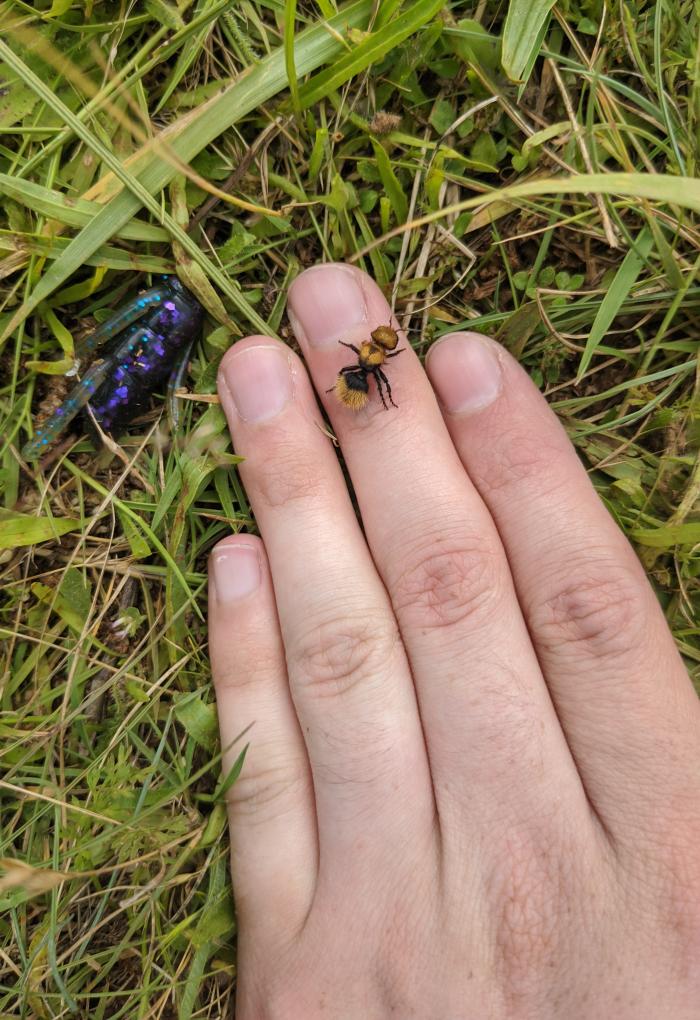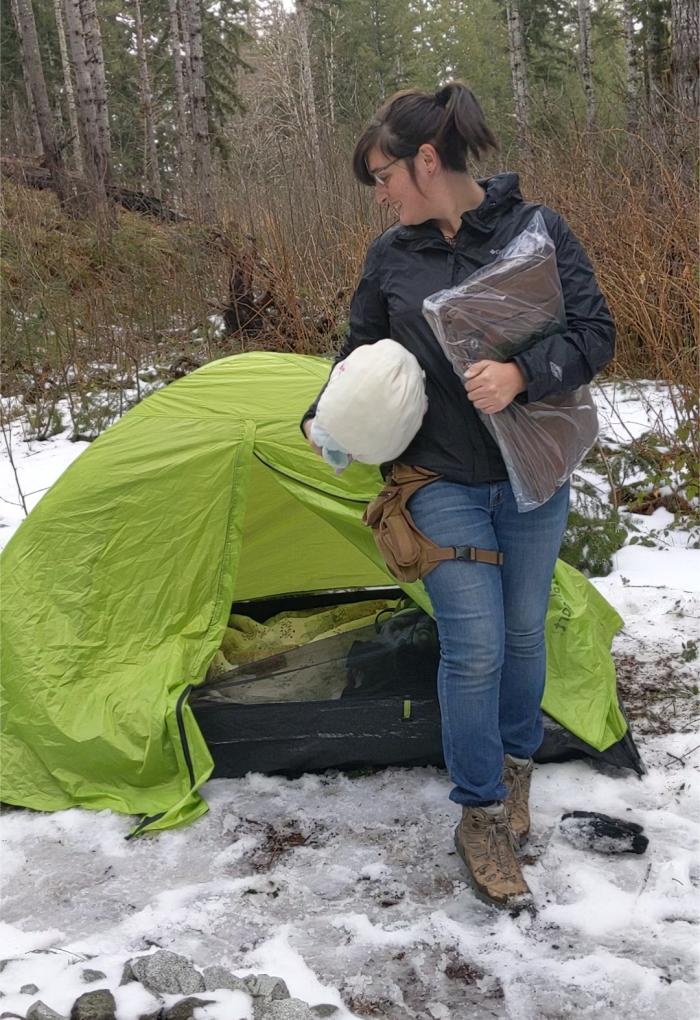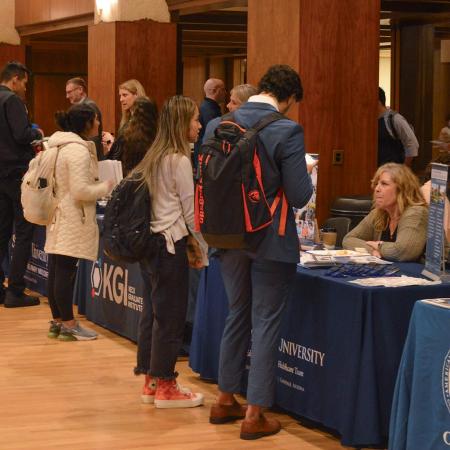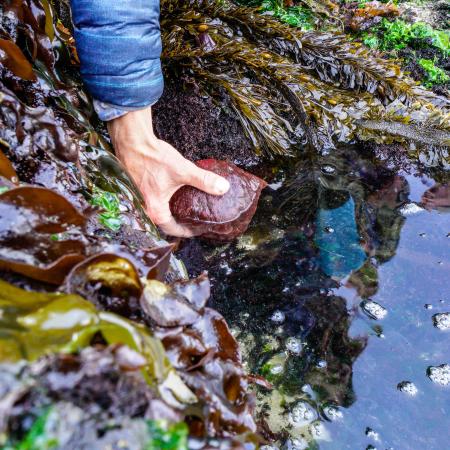Raffin was eager to get hands-on experience with the creatures she had spent most of her life hoping to study. During her junior year, she found that experience in the form of an entomology lab on campus. The lab works in association with the USDA Agricultural Research Service and its ultimate goal is to create alternatives to chemical pesticides. In the many expectations she had for her new job, she never anticipated studying bugs four times smaller than a single grain of rice.
“The work that I’m doing is with western flower thrips. A lot of people haven’t heard of them before, I hadn’t until I started working with them. They’re pests in everybody’s garden and in almost every flower you come across,” she explained.
Her lab seeks to create new pest management tools utilizing substances already in the bodies of the insects they’re aiming to suppress. Raffin’s research focuses on neuropeptides, biological compounds used as signals to control muscles and nerves within the thrips. By applying different neuropeptides to the bugs, she can discover how the signals impact their bodies and which can be used in the pesticides they create.
“It feels good to know that you’re contributing to the greater world of science.”
Such small subjects require equally small equipment to perform the nano-injections Raffin regularly carries out.
“We have to make these really tiny needles that you need a microscope to see the tips of,” she explained. “Then we use them to inject the thrips with around ten nanoliters of whatever peptide we’re researching. It’s such a small amount of liquid that you can’t see it without the microscope, so we’re talking insanely precise movements.”
Mechanical wheels help to control the needle, and once the substance has been injected, the thrips are painstakingly monitored for up to 72 hours. For Raffin, working in a lab has breathed life into the concepts of science she’s learned as an undergraduate.
“It’s very fun to enact a real-world experiment the way we always talk about in classes,” she said. “It can be a struggle sometimes, but it feels good to know that you’re contributing to the greater world of science.”
Connecting and collecting
Over her time in college, Raffin dove into more than just the laboratory. She attended events held by Out in STEM, a club dedicated to LGBTQ+ students in science, and worked as an employee at the Pride Center on campus. As a member of the transgender community, Raffin helped create a trans sex education event to bring more awareness to subjects typically overlooked in such classes.
“We went through the more taboo topics that don’t get talked about when you go into high school sex ed,” she said. “They don’t talk about how taking hormones affects your body, for instance. That was one of the events I was the proudest of participating in and supporting because I feel like our community needs more support to get trans people to feel comfortable participating in community events.”
The Women’s Center, another cultural center on campus, was also a space Raffin became involved in. “The center had a lot of trans-centered conversation circles that I went to which were really nice for connecting with other people, especially other trans women. Having a space that’s very women-centered, especially being a woman in STEM, felt good.”
Raffin’s passion for entomology also gave her a community separate from her lab through Bug Club. The club provides a space not only to discuss research and the field as a whole, but also to engage in less academic activities celebrating a shared love of insects.
“There’s a lot of fun events that the club does that are more crafts- and community-focused. We had a night where we all got together and made origami insects, and now I have a wall of origami butterflies,” Raffin shared.
Insect collecting has been a long-time hobby of hers, and since joining Bug Club, Raffin has had a dedicated space to share and grow this hobby even further. “Most of the activities we do involve personal collection. If you like learning how to identify bugs and how to start your own little collection, it’s the right place.”
